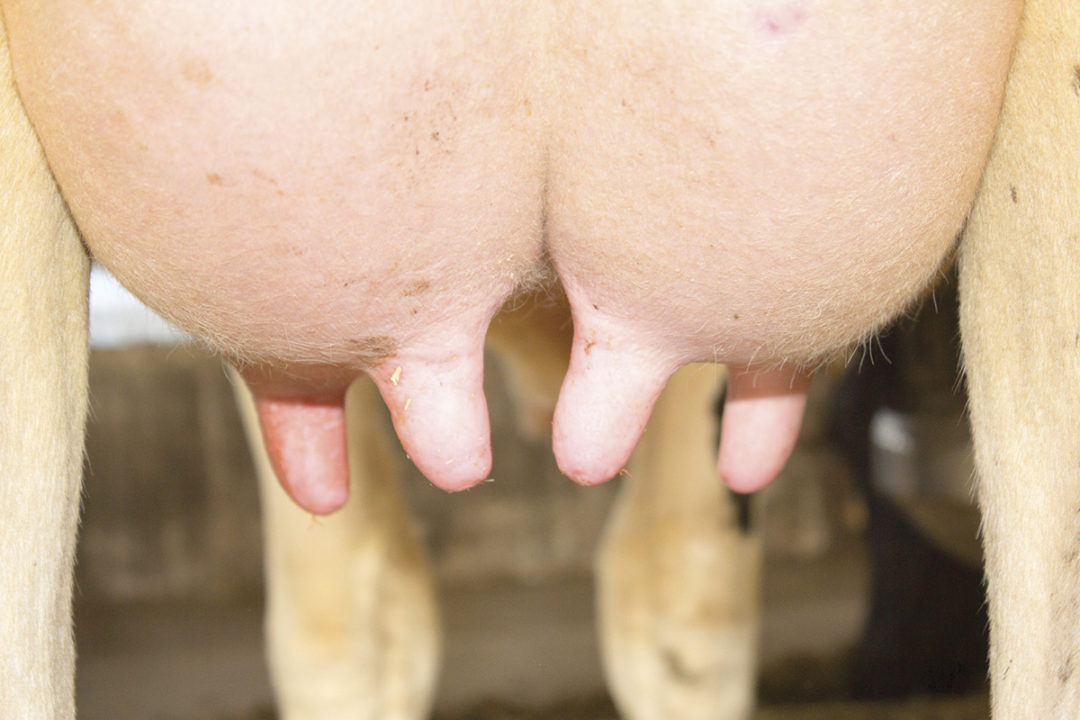To read this article in French, click here.
Very rarely do we think of mastitis when we hear people talking about pasteurella, but should this be something we are thinking about?
So what is pasteurella and why does it matter to me? Pasteurella is more often considered in the beef industry and more of an afterthought in dairy cattle. Pasteurella, also known as shipping fever, affects the respiratory tracts of cattle and can cause pneumonia, permanent damage and eventually death in some animals. It is detected most often in youngstock but more recently has been found in milking herds as well. Pasteurella occurs more often in herds located in areas with poor air quality or barns with poor ventilation and overcrowding.
Pasteurella is a gram-negative bacteria, and when we think about mastitis and gram-negatives, we normally think of E. coli and possibly klebsiella. As has been documented many times, gram-negative mastitis is the costliest form of mastitis to dairy producers. In a 2011 article in the Journal of Dairy Science, it was determined that the average costs per case of gram-positive, gram-negative and other clinical mastitis were $133.73, $211.03 and $95.31, respectively. Although these are values based on the economics of 2011, they demonstrate the financial strain that is placed on dairies due to single cases of mastitis.
What role does pasteurella play in reference to mastitis? Although pasteurella is found in the respiratory tract, under suitable conditions, it has been found to spread from the respiratory tract to the udder via the blood or lymphatic systems. Cornell University collected milk samples from 108,312 dairy cows during 1,601 farm visits in New York and Pennsylvania between January 1991 and June 1995 and found the following results. Of the samples collected, they found E. coli in one out of every 258 samples, klebsiella in every one out of 608 samples and pasteurella in one out of 2,190 samples. Using a mailbox price of $13 per hundredweight (cwt) and a 305-day mature equivalent (305 ME), they determined the average cost per incidence of mastitis to be $127.53. They also found that the costliest cases of mastitis were from pasteurella and averaged $500.12 per incidence.
Treatment of gram-negative bacterial infections often depend on the severity of the mastitis itself. It is generally accepted that if the cow has a slight to moderate gram-negative case of mastitis but is not sick or off feed, treatment may be an option. Results of treatment are often not successful once the cow has gone off feed and has become toxic, which can happen very rapidly. In many of these cases, the cow is lost. Pasteurella mastitis has been documented from the 1950s to present day but has not been seen as a major problem yet. When dealing with pasteurella, the results can be even less successful than with E. coli. These cattle are usually suffering from respiratory problems as well as mastitis, which makes it less likely for them to have a successful outcome.
One of the best ways to combat gram-negative mastitis infections is through vaccination. There are very few gram-positive mastitis vaccines currently being used, while the majority of vaccines are for gram-negative bacteria. Most gram-negative vaccines are only for E. coli. However, one gram-negative mastitis vaccine is USDA licensed for use to prevent E. coli, pasteurella, mannheimia and salmonella. It is paired with an immunostimulant to help increase B and T lymphocytes, neutrophils and circulating antibodies for an overall more-robust immune system.
Not all immunostimulants affect the same pathways. There are numerous pathways an immunostimulant affects that are commonly known to be beneficial but difficult to accomplish without negative reactions. That is the unique part of particular immunostimulants, those that are modulated in a way to get positive benefits without triggering a negative response.
The way most vaccines are built, multiple antigens have to be added to the vaccine to get protection from multiple diseases. This cocktail method means that the animal has to respond to numerous antigens individually. There is one vaccine available that is different for two reasons. First, the way the technology is designed – it is broad spectrum with only one antigen. The unique antigen is the core of all gram-negative bacteria. This allows it to protect against numerous gram-negative bacterial diseases. Second, this particular vaccine is the only gram-negative vaccine that does not have harmful active endotoxins. Endotoxins, also known as lipopolysaccharides, are not grown at all by this vaccine’s antigen. This includes the toxin lipid A that plagues other gram-negative vaccines.
Having a commercially licensed mastitis vaccine that also protects against pasteurella, mannheimia and E. coli is key to this past, present and future problem. This specific vaccine and type of prevention has been proven to significantly reduce clinical coliform mastitis and help to increase profitability for dairies of all sizes.
References omitted but are available upon request. Click here to email an editor.










